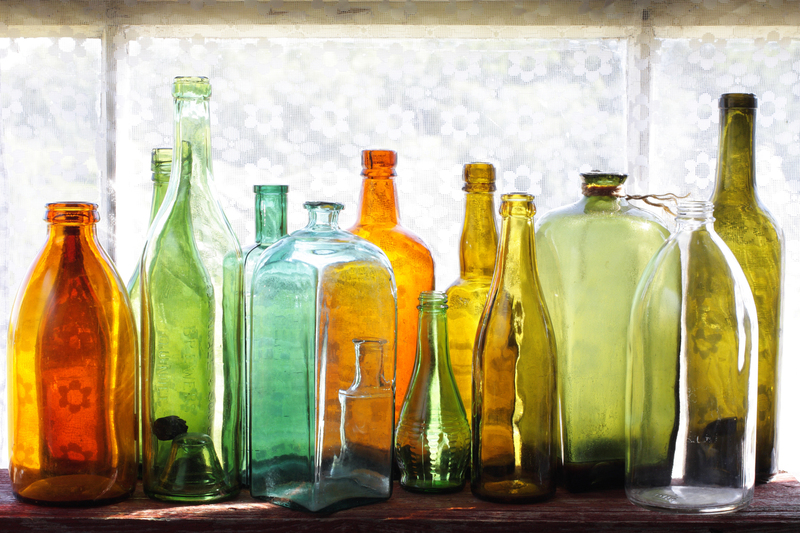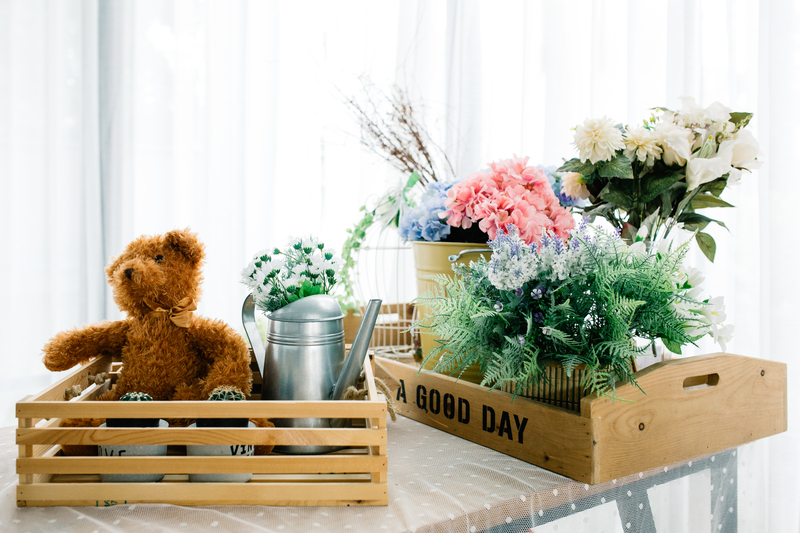Eco-Friendly Upcycling Ideas for Turning Trash Into Unique Treasures
In today's world where sustainability and conscious consumption are taking center stage, eco-friendly upcycling shines as an innovative and creative way to minimize waste and add personal flair to our lives. By creatively repurposing what many consider "trash," you not only help the environment, but also showcase your artistic skills, and even save money in the process. Below, we delve into inspiring upcycling projects and innovative ideas that will transform your trash into one-of-a-kind treasures--perfect for the environmentally aware and style-savvy alike.
What Is Upcycling and Why Is It Important?
Upcycling refers to the process of repurposing waste materials, old items, or discarded objects and creatively transforming them into products with a higher practical or aesthetic value. Unlike recycling, which often breaks down materials into a more basic form, upcycling adds value by reimagining the object's use. Not only does this process conserve resources, but it also lessens landfill waste significantly.
- Reduces landfill usage and environmental pollution
- Saves natural resources by limiting the need for new materials
- Boosts creativity by turning potential waste into beautiful, functional items
- Promotes sustainability and eco-conscious living
Eco-friendly upcycling ideas empower people everywhere to be part of the sustainability movement while expressing their creativity. Below, we will look at a range of upcycling approaches for the home, garden, fashion, and more.

Upcycling at Home: Creative DIY Projects
Your home is brimming with items that can be transformed into practical or decorative pieces through ingenious eco-friendly upcycling ideas. Let's take a tour around your rooms and discover potential treasures!
1. Glass Jars and Bottles: From Containers to Home Decor
- Mason Jar Lanterns: Add wire handles and tea lights for rustic outdoor lighting.
- Vases and Planters: Paint or decorate glass bottles for vibrant flower displays or small succulent planters.
- Kitchen Storage: Repurpose jars for bulk food storage--reduce the need for single-use plastic containers.
Tip: Sterilize jars before use and consider adding chalkboard labels for a stylish, organized pantry.
2. Old Furniture: Revive and Restyle
- Repainting and Stenciling: Sand down wooden chairs, tables, or dressers and update with non-toxic paints or artistic stencils.
- Pallet Projects: Disassemble wooden pallets to create bookshelves, coffee tables, or rustic bed frames.
- Suitcase Side Tables: Stack and secure vintage suitcases to craft eclectic, storage-friendly side tables.
Upcycling old furniture not only preserves quality craftsmanship but also limits demand for new resources.
3. Textile Transformation: Old Clothes, New Life
- T-Shirt Tote Bags: Cut and sew old t-shirts into reusable and washable shopping bags--great for reducing plastic bag usage.
- Quilts and Cushion Covers: Upcycle sentimental clothing like baby grows or band t-shirts into memory quilts or pillow covers.
- Rag Rugs: Braid or weave scraps of fabric into colorful and durable rugs for the entryway or bathroom.
Eco-friendly clothing upcycling is not only sustainable, but also preserves memories and develops sewing skills.
Upcycling in the Garden: Turning Waste Into Outdoor Wonders
Gardens are prime spaces for creative upcycling with an eco-friendly twist! Household trash can be repurposed into stunning, functional features for your patio, balcony, or backyard.
1. Tin Can Planters
- Collect and wash food cans, then punch drainage holes in the bottom.
- Paint or wrap them with weather-resistant materials for added color.
- Hang using string or mount on fences for a vertical herb garden--an excellent small-space upcycling idea!
2. Old Tires: Bold Planters and Play Spaces
- Planters: Paint tires with bright, non-toxic paints and fill with soil and flowers for a cheerful garden accent.
- Sandbox: Cut larger tires in half, clean, and fill with sand to make a contained play area for kids.
- Garden Stairs: Stack and secure several tires to create quirky and sturdy steps in a sloping garden.
3. Broken Pots and Crockery: Mosaic Marvels
- Collect ceramic fragments and use exterior glue to create colorful mosaics on stepping stones, plant pots, or garden walls.
- Old, cracked pots can also become whimsical fairy gardens or plant markers.
Incorporating upcycled materials in your garden not only helps the environment but fosters a creative, inviting outdoor space.
Upcycled Fashion: Wear Your Sustainability
Eco-friendly upcycling in fashion is a major trend as more people look for ways to stylishly reduce their environmental footprint. With a little creativity and basic sewing skills, anyone can turn worn-out clothing and scrap materials into unique, fashionable statements.
1. Denim Revival: Endless Possibilities
- Patchwork Jeans: Use scraps from old denim to patch holes and make trendy, personalized jeans.
- Denim Bags and Pouches: Repurpose legs from jeans to create sturdy shopping bags or small coin purses.
- Appliques: Cut shapes from denim and sew onto jackets, backpacks, or caps for an instant style upgrade.
2. Jewelry from Junk
- Transform bottle caps into funky earrings or pendants.
- Use leftover beads, buttons, and zippers to create bespoke bracelets or necklaces.
- Repurpose fabric strips into braided statement necklaces or headbands.
3. T-Shirt Yarn Accessories
- Cut old t-shirts into strips to create eco-friendly yarn for crafting soft, stretchy jewelry, scarves, or even crocheted baskets.
Upcycling clothing and accessories is not just about eco-friendly fashion--it's also about self-expression and celebrating individuality.
Kids' Crafts: Teach Sustainability Through Fun
Eco-friendly upcycling projects are excellent tools for teaching children about sustainability. Fun, hands-on crafts spark their imagination while instilling habits that contribute to a greener world.
1. Cardboard Box Creations
- Playhouses: Assemble and paint large boxes for forts, castles, or shops.
- Puppet Theatres: Cut windows and decorate for easy at-home performances.
- Costume Armor: Transform cereal boxes into shields, swords, or superhero gear.
2. Plastic Bottle Art
- Cut and paint bottles to create flowers, lanterns, or animal figures.
- String several together for a homemade wind chime or mobile.
3. Egg Carton Animals
- Paint and assemble egg carton segments into caterpillars, bugs, or sea creatures.
- Add googly eyes and pipe cleaners for extra character!
Through these eco-friendly upcycling activities, children embrace the value of reusing and reducing waste from an early age.
Unconventional Upcycling Ideas for Home and Beyond
Ready to go beyond the basics? Try these lesser-known, but highly creative, eco-conscious upcycling projects that will truly set your space apart:
1. Wine Cork Bulletin Boards
- Glue used wine corks together inside a picture frame to create a unique bulletin board or trivet.
- Arrange in creative patterns for functional and decorative flair.
2. Lightbulb Terrariums
- Carefully hollow out spent incandescent bulbs and fill them with tiny air plants, moss, or pebbles for miniature terrariums.
- Hang them near windows for a whimsical display.
3. Old Ladder Bookshelves
- Secure and paint an old wooden ladder, then use the rungs to support books, plants, or artwork for a rustic, vertical shelf.
4. Drawer Herb Gardens
- Salvage wood drawers from discarded furniture. Add drainage, fill with soil, and plant your favorite kitchen herbs for a mobile windowsill garden.
The Environmental Benefits of Eco-Friendly Upcycling
Choosing to embrace sustainable upcycling instead of discarding items has a host of benefits for the environment:
- Reduces landfill waste: Every upcycled item means less trash in landfills--combatting the global waste crisis.
- Conserves resources: Reusing old materials reduces the demand for new resources such as wood, metal, and plastic.
- Decreases greenhouse gas emissions: Landfill waste decomposes and releases methane, while producing new goods emits CO2. Upcycling curtails both processes.
- Promotes a circular economy: Upcycling helps to keep materials in use for longer, shifting away from the "take-make-waste" mindset of modern consumption.
By engaging in eco-friendly upcycling projects, you become a vital part of this circular economy--making your mark on a greener, more creative world.

Tips for Successful Upcycling Projects
- Choose quality materials: Not everything is salvageable, but many items just need a little cleaning or minor repair.
- Think creatively: See beyond an item's original purpose. A rusty rake can become a wine glass holder; an old ladder, a bookshelf.
- Use safe, non-toxic products: If you're painting or sealing, always opt for eco-friendly, non-toxic choices--especially for items related to food, children, or pets.
- Learn basic repair skills: Simple sewing, nailing, gluing, or sanding can dramatically expand your upcycling possibilities.
- Get inspired: Platforms like Pinterest, Instagram, and YouTube offer endless tutorials and inspiration for your next upcycling adventure.
Conclusion: Celebrate Eco-Friendly Living Through Upcycling
The adventure of turning trash to treasure is more than an eco-friendly trend--it's a lifestyle shift towards mindful consumption, resourcefulness, and creative self-expression. Whether you opt for easy DIY upcycling projects or pursue ambitious furniture overhauls, eco-friendly upcycling benefits your home, your community, and the planet.
Discover your next innovative upcycling idea today, and start turning your "waste" into the unique treasures of tomorrow!